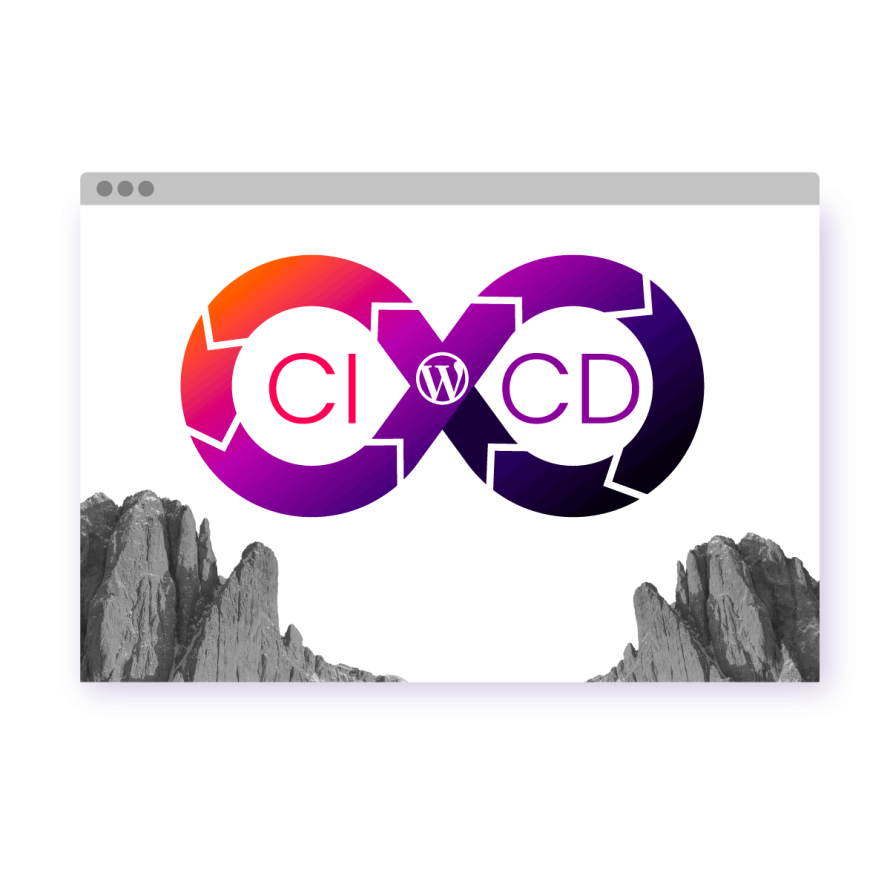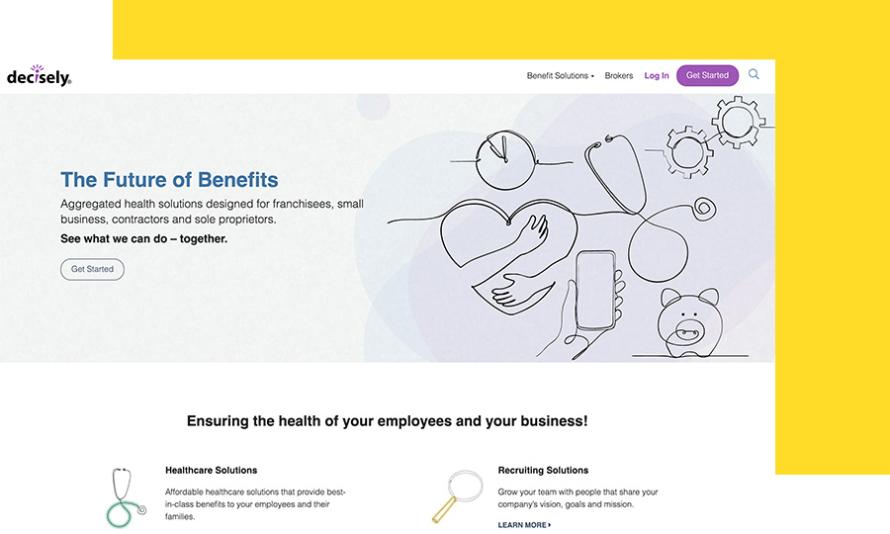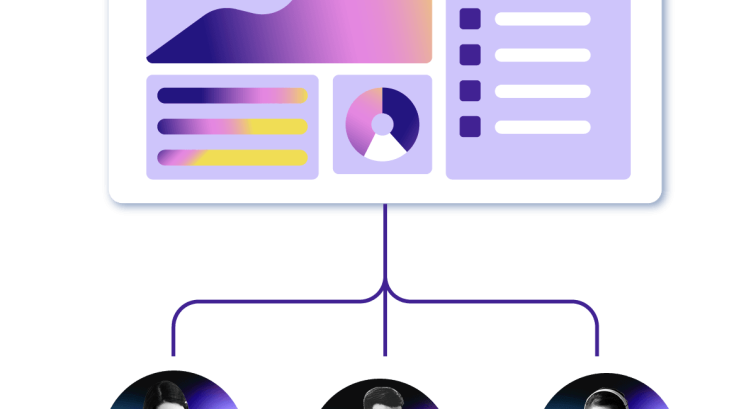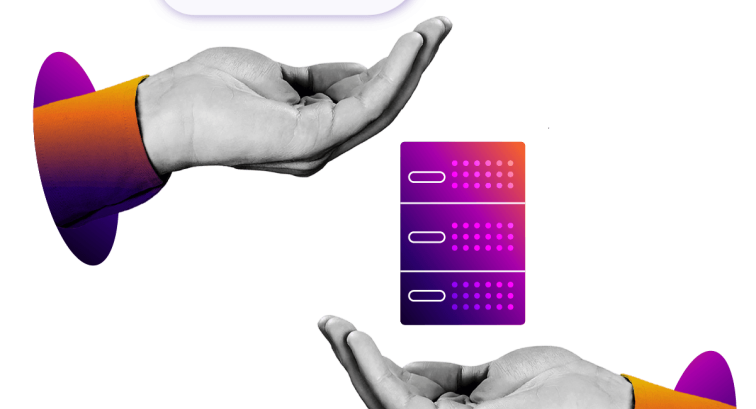Filters
Content Type
Topics
Create a Robust CI/CD Workflow for WordPress
Continuous Integration and Continuous Delivery (CI/CD) have become essential practices in web development. Automating the code integration, testing and deployment is critical for maintaining smooth operations in a fast-paced development environment.
Image

For WordPress developers, who often rely on manually updating files and testing changes on live sites, CI/CD workflows provide an efficient solution by streamlining these processes, saving time and reducing the likelihood of costly errors. A well-structured CI/CD pipeline transforms how developers manage code quality, improve site stability and significantly reduce the risk of downtime.
In this guide, we’ll explore how to create a robust, efficient CI/CD workflow tailored for WordPress. You’ll discover how to automate deployments, manage database migrations and keep environments in sync, all while building a scalable, secure workflow for your WordPress site.
Key Components of a WordPress CI/CD Pipeline
Continuous Integration (CI)
At the heart of any CI/CD pipeline is Continuous Integration (CI). It involves frequently merging code changes into a shared repository, ensuring that every team member's work stays in sync. Whenever a new commit is made, automated tests are triggered, catching bugs early in the process. By doing so, potential issues are resolved before they can escalate, maintaining the stability of the code before it moves onto the next stage.
Continuous Delivery/Deployment (CD)
Typically, after CI testing, the code is deployed to a staging environment where further testing takes place. Once the tests pass, the validated code can be pushed to production.
Techniques such as blue-green deployment or rolling updates ensure that new code is deployed without disrupting the live site’s operations. Should any issues arise during deployment, automated rollbacks kick in, restoring the last stable version to keep the site running smoothly.
Automation
Automation is what powers the entire CI/CD pipeline. By automating tasks like testing, code validation and database syncing, the process becomes far more efficient while minimizing the risk of human error. Tools like PHPUnit, Behat or Cypress can be used to automatically test code changes, while automated security scans and code linting maintain a secure, high-quality codebase.
Additionally, WordPress-specific tools such as WP-CLI automate tasks like content and database synchronization across different environments, ensuring everything stays consistent throughout the development and deployment process.
Benefits of CI/CD in a WordPress Environment
Faster Development
With CI/CD automating tasks like testing, deployment and integration, developers can spend less time on the repetitive stuff and more time building exciting new features. You’ll get things from development to production faster, which means more efficient workflows and quicker results.
Reduced Human Error
Let’s face it – manual deployments can be risky. Whether it’s skipping a step or misconfiguring something, mistakes happen. CI/CD takes those worries off your plate by automating the whole process. This ensures that updates go through proper testing and validation before they hit the live site, leading to fewer bugs and more reliable, headache-free releases.
Early Bug Detection
No one likes finding bugs after the fact. With CI/CD, automated tests run every time you commit code, catching problems early before they spiral into bigger issues. This saves time and effort down the road, helping you fix bugs when they’re easier (and cheaper) to handle.
Environment Consistency
Keeping everything consistent across development, staging and production can be a juggling act, but CI/CD makes it easy. With every stage of your pipeline connected, you know the code is the same whether you’re testing or going live. You can even use tools like Pantheon’s Multidev feature to create isolated environments where you can safely test changes before merging, reducing the risk of any nasty surprises when it’s time to go live.
Automated Updates
Routine WordPress updates – whether it’s for core, themes or plugins – can be a bit of a chore. CI/CD steps in to handle these updates for you, ensuring your site stays secure and up-to-date without the need for manual intervention. This way, you avoid those dreaded security vulnerabilities and compatibility hiccups.
Better Collaboration
When everyone’s on the same page, things just flow more smoothly. CI/CD tools like GitHub Actions and CircleCI help teams work on different features at the same time, making sure code conflicts don’t slow you down. Feedback loops become quicker and the whole team gets to spend more time solving problems and building new features – together.
Setting Up a CI/CD Workflow for WordPress
Prerequisites for Building a CI/CD Pipeline
To get started with CI/CD for WordPress, you’ll need a few essential components in place. Think of these as the building blocks that will support your workflow:
- Version control (Git): Git helps you track changes in your WordPress codebase, manage multiple branches and easily integrate new features or bug fixes. Platforms like GitHub, GitLab and Bitbucket host your repositories and make team collaboration easy, ensuring everyone is working with the latest code.
- Hosting environment: A hosting platform like Pantheon that supports CI/CD workflows is necessary. Pantheon’s tools automate deployments across development, staging and production environments, so you don’t have to worry about manually pushing changes.
- Development tools: Tools like Lando provide a flexible and customizable local development environment for WordPress and other platforms, allowing you to mimic production conditions with advanced support for custom configurations. Composer, on the other hand, manages WordPress core, plugin and theme dependencies, which keeps everything organized and ensures your CI/CD workflow stays efficient.
Choosing the Right CI/CD Tools for WordPress
Picking the right tools is key to automating your WordPress CI/CD pipeline. Here are some popular options to consider:
- Jenkins: Known for being highly configurable, Jenkins supports a variety of plugins that automate WordPress builds, testing and deployments. It’s flexible but may require a bit more setup.
- GitHub Actions: If you’re already using GitHub, GitHub Actions is a natural fit. It allows you to automate everything directly within the repository, including testing and deployment.
- CircleCI: CircleCI provides scalable pipelines and integrates well with GitHub and Bitbucket. It automates testing and deployment and offers excellent customization for your workflows.
- TravisCI: The TravisCI tool is widely used for testing code across different environments and automates deployments based on code pushes, making it a solid choice for diverse setups.
Local Development Best Practices
When working locally, it’s important to follow some best practices to ensure your code stays consistent before integratation into your CI/CD pipeline. Lando is a great tool for creating local WordPress environments that mirror your production site. This helps you ensure that the code behaves the same way when deployed to live environments, reducing any surprises down the line.
Additionally, syncing databases, media and code between local and remote environments should be automated to minimize risks. This ensures your local environment stays in sync with your staging and production sites, so you’re not caught off guard by any differences.
Building Your CI/CD Pipeline With Pantheon’s Tailored CI/CD Solution for WordPress
Pantheon provides a WordPress-specific platform that simplifies the entire CI/CD process, from setting up your environment to managing deployments. With built-in tools and easy integration with popular CI/CD services, Pantheon makes it simple to streamline development, testing and deployment workflows. Here’s how:
Setting Up Your Development Environment
The first step in building your CI/CD pipeline is configuring your development environment. Pantheon uses Git for version control, which is essential for tracking changes, managing feature branches and pushing updates across different environments. By leveraging Git repositories, you ensure smooth collaboration and efficient deployments.
Once your WordPress project is connected to Pantheon, you’ll want to configure the Development, Test and Live environments. These match the different stages of your CI/CD pipeline and Pantheon automates deployments between these environments using Git, taking the manual work out of the equation.
Image

Integrating With CI/CD Tools (e.g., GitHub Actions, Bitbucket Pipelines)
Pantheon integrates smoothly with popular CI/CD tools, enabling automation for key tasks throughout the development process. If you’re using GitHub for version control, GitHub Actions can trigger builds, run tests and deploy to Pantheon as soon as code is committed or merged. This ensures your site goes through automated testing and deployment after every push.
For teams working in Bitbucket, Bitbucket Pipelines can automate processes like testing, code linting and deploying WordPress updates to Pantheon. This helps streamline your workflow, ensuring each push is properly validated before going live.
Configuring Your Build Stages (e.g., Code Linting, Automated Testing, Security Scans)
To maintain a reliable CI/CD pipeline, it’s essential to configure each stage of the build process:
- Code linting: Integrating a linter like PHPCS ensures your code follows WordPress coding standards by automatically checking for errors during development. For more advanced setups, tools like Lefthook and Husky can integrate with Git hooks in your CI/CD pipeline, preventing code from being pushed if errors are detected, so issues are caught and resolved even earlier.
- Branching strategy: Adopting a branching strategy like Gitflow or feature branching helps manage updates and bug fixes efficiently. Each feature gets its own branch, and once all checks are passed, they can be merged into the main branch or staging environment. With CI/CD workflows, branching can also trigger multi-dev environments automatically, allowing for isolated testing and review before merging.
- Triggering the pipeline: When code is committed and pushed, the CI/CD pipeline kicks into gear. Automated testing, code linting and security scans run in sequence, validating the changes before they can move forward.
- Automated testing: Use PHPUnit for unit tests and tools like Behat or Cypress for browser and end-to-end testing. These automated tests ensure that your code is stable and functions correctly before being deployed.
- Security scans: Pantheon’s integrated security scans automatically check for vulnerabilities, ensuring your WordPress code is secure before hitting the live environment.
Leveraging Pantheon’s Multidev for Efficient Feature Branching
Pantheon’s Multidev environments are essential for feature development. Multidev allows you to create isolated environments where you can test new features without affecting the main codebase. Essentially, it’s like having a copy of your live WordPress site that you can experiment on freely.
Working on the same site using different platforms “can just be chaos,” said Steph Schwarz, Director of Technology at 3 Media Web. “Pantheon’s Multidev environments and Dev, Test, Live workflow really simplify the process so multiple teams can work at the same time without stepping on each other’s toes.”
Each developer can work within their own Multidev environment, making it easier to reduce conflicts during integration. Once the feature has been thoroughly tested, it can be merged back into the main branch and deployed to production, ensuring everything works smoothly before the code goes live. This approach minimizes risk and allows for more flexible, efficient development.
Optimizing Your CI/CD Workflow for WordPress
Once your CI/CD pipeline is up and running, the next step is continuous optimization. The goal is to fine-tune the process so it’s faster, more efficient and reliable. Here’s how you can keep your WordPress CI/CD pipeline performing at its best.
Best Practices for Code Management
Good code management is essential to keep things running smoothly. When done right, it minimizes conflicts, reduces errors and keeps your CI/CD pipeline efficient:
- Branching strategies: A solid branching model helps organize and manage features, bug fixes and releases without causing conflicts.
- Git flow: This model uses dedicated feature branches for new development and hotfix branches for quick fixes. This approach keeps work isolated until it’s fully ready for deployment.
- Feature branching: Each new feature or update gets its own branch. Once the code is approved and tested, it’s merged back into the main branch, ensuring smooth integration without surprises.
- Code reviews: Code reviews are critical for maintaining high-quality code. They help ensure that all new code follows established standards, passes tests and doesn’t introduce security vulnerabilities or performance issues. It’s a second set of eyes before the code enters production, making sure everything stays on track.
Improving Build Efficiency and Speed With Caching Strategies
Caching is a key optimization tactic that can dramatically speed up your build times by reusing resources instead of starting from scratch each time:
- Dependency caching: Cache WordPress plugins, themes and Composer packages between builds to avoid unnecessary downloads. This can significantly cut down on build preparation times by using pre-cached assets.
- Docker caching: If you’re using Docker, cache intermediate layers of your Docker image. This prevents having to rebuild the same components with every deployment, helping to shave time off the process.
- Parallelization: Running multiple tests or pipeline stages in parallel allows tasks to be executed concurrently rather than sequentially. This approach reduces overall build times, making the workflow more efficient and freeing up time for actual development.
Ensuring Deployment Success With Continuous Monitoring and Feedback
Once the code is deployed, the work isn’t done. Ongoing monitoring and feedback are crucial to ensure the deployment was successful and to catch any potential issues before they become serious:
- Monitoring tools: Use Pantheon’s New Relic feature or third-party options like Datadog to keep an eye on performance metrics. Monitoring things like response times, server load and bottlenecks post-deployment helps ensure your site is running smoothly.
- Post-deployment feedback: Set up automated alerts and post-deployment test suites to verify that everything is working as expected in the live environment. This feedback loop ensures that you can address any issues quickly.
- User behavior monitoring: Tools like Google Analytics and Hotjar can give you insight into how users are interacting with your site post-deployment. Monitoring real-world behavior helps identify usability or performance issues that automated testing might not catch right away. This feedback helps you fine-tune both your site and your CI/CD process for better results.
Pantheon in Action: Decisely
Image

Decisely, a company providing employee benefits and HR solutions, needed a way to streamline their WordPress development workflow. Their previous development process was manual and time-consuming, leading to inefficiencies and delays. After switching to Pantheon, their development team saw a 5x increase in efficiency.
Pantheon's Multidev has been a game-changer. Prior to Multidev, when we were on WPEngine, I had to make an update and pray that it wouldn't take down all 150 of our sites that are connected. Because I was literally pushing everything directly to our live sites. And that's terrifying.”
– Brittany Rapheal, Senior Web Developer at Decisely
Pantheon’s platform allowed Decisely to automate much of their deployment process, using Multidev for feature branching and isolated testing environments. This significantly reduced the risks associated with manual deployments and gave Rapheal confidence in pushing updates.
Thanks to these improvements, Decisely’s developer focused more on innovation rather than maintenance, speeding up their development cycles and allowing them to deliver updates and new features much faster than before.
Common Challenges in WordPress CI/CD and How To Overcome Them
Managing Database Migrations in WordPress CI/CD
Database migrations can be tricky in WordPress, as content and settings often change across environments. Tools like Pantheon’s built-in database syncing feature simplify the process by allowing smooth transfers between development, staging and production. Regular syncing ensures your data is always up-to-date across environments, minimizing the risk of inconsistencies when deploying changes.
Dealing With Plugin/Theme Conflicts
Third-party plugins and custom themes can introduce conflicts when updating or deploying new features. To reduce this risk, use Composer to manage plugin and theme versions. By locking versions, you maintain consistency across environments. Additionally, Pantheon’s Multidev allows you to thoroughly test plugin and theme updates in isolated environments before pushing them live. Automated tests also help catch any conflicts early, minimizing issues in production.
Handling Environment-Specific Configurations
WordPress often requires different settings, such as API keys and database credentials, for each environment. Pantheon’s Secrets management provides a secure way to store sensitive data, like API keys, directly on the platform, ensuring these credentials are encrypted and accessible only to the appropriate environments.
Additionally, tools like Bedrock or .env files can help organize environment variables locally. For automating environment-specific tasks, such as cache clearing and database updates, WP-CLI is invaluable, allowing you to execute these actions only where needed.
Addressing Content and Media Syncing
Keeping content and media consistent across environments can be challenging, especially when content changes frequently. WP-CLI and WP Sync DB can automate media file syncing between environments, ensuring assets remain consistent. For rapidly changing sites, consider separating code from content updates or using selective sync tools to prevent content from being overwritten during deployments.
And if you’re an advanced user, you can also consider using image proxies on local environments to streamline media management without needing to sync large files.
Ensuring Security in the CI/CD Workflow
Given WordPress’s popularity, security is always a priority. Automate security processes within the CI/CD pipeline using Pantheon’s integrated security scans or third-party solutions such as Snyk.
To protect sensitive information like API keys or database credentials, use secret management tools like GitHub Secrets or HashiCorp Vault, which securely store these details, keeping them out of your codebase and ensuring secure updates.
Implement CI/CD for Your WordPress Sites With Pantheon
As WordPress development continues to evolve, the demand for automated workflows has never been greater. CI/CD pipelines are essential for speeding up releases, maintaining reliable code and reducing downtime.
Pantheon’s WordPress-specific platform makes setting up and managing a CI/CD pipeline straightforward. Whether you’re managing a small site or a complex WordPress project, Pantheon provides everything you need to build a powerful CI/CD pipeline that’s tailored to your site’s specific requirements.
With Pantheon’s advanced CI/CD tools, you’ll embrace a future of faster, more reliable development. Sign up for Pantheon today for free and take control of your WordPress development with confidence!


